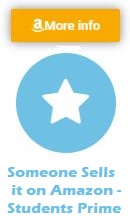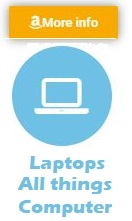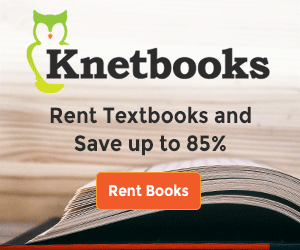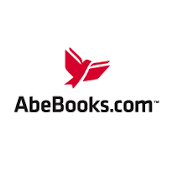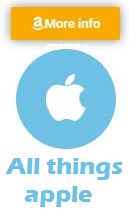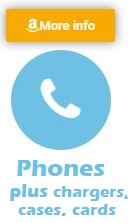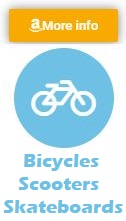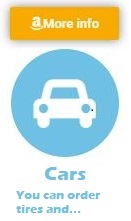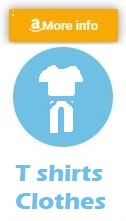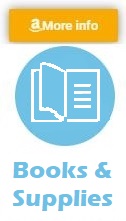John Fallon, CEO of textbook maker Pearson, on Kara Swisher podcast
If Amazon doesn't have a Whole Foods grocery near you, there are non-perishable groceries ( food that doesn't spoil) that Amazon can ship to you

“There’s a famous phrase: The first step in solving a problem is recognizing you’ve got one,” says Pearson CEO John Fallon. And for education company Pearson, the problem is also one of its key products: the textbook.
Since the 1970s, the business model for textbook makers has been to sell very expensive books to students, updating them every few years with new material to keep students paying top dollar. But online textbook rental services from companies like Chegg and Amazon have made it much easier to pay much less, and as a result Pearson’s revenues have fallen from $2 billion in 2013 to $1.3 billion today, Fallon said on the latest episode of Recode Decode With Kara Swisher.
So instead of selling giant hardcover textbooks like Calculus: Early Transcendentals (list price for a new hardcover copy: $277.20), Pearson is going to start renting digital textbooks for $40 to $80, updating them over the air. Next month, it will launch the first of a new series of mobile apps called Aida — a portmanteau of AI and Ada Lovelace — that will let calculus students take a picture of their homework and, Fallon said, get step-by-step corrections.
“There’s something like 100 different concepts that you have to master in introductory calculus,” he said. “If you’re designing your textbook or a lecturer designing your course, you teach those 100 concepts in a linear way, building on one another, which is the only rational way you can teach something when you’re trying to do it to large numbers of people. This enables us to then also teach them in a nonlinear way, which means it’s personal and adapts it to you.”
“It can provide individual feedback to the student,” Fallon added. “You can say, ‘Well, you’ve mastered this concept, but you’re struggling here. Here’s where you should focus more effort. Here’s a tip for you. Here’s a little snippet of a video. Here’s a person you can talk to. Here’s a classmate who’s actually mastered this.’ Actually, the classmate will learn as well, because we learn by teaching others what we know.”
You can listen to Recode Decode wherever you get your podcasts, including , Spotify, Google Podcasts, and TuneIn.
Below, we’ve shared a lightly edited full transcript of Kara’s conversation with John.
Kara Swisher: Hi. I’m Kara Swisher, editor-at-large of Recode. You may know me as Mark Zuckerberg’s private tutor, but in my spare time, I talk tech and you’re listening to Recode Decode from the Vox Media Podcast Network.
Today in the red chair is John Fallon, the CEO of Pearson, which is the largest education company in the world, and the former owner of Penguin Random House and the Financial Times. Just recently, Pearson announced that it’s going to pivot away from print textbooks and into digital textbooks that can be updated over time. I’m doing this podcast from London, England. John, welcome to Recode Decode.
John Fallon: Thank you very much. Nice to be here. Welcome to London.
Thank you, I’m going to be here for 14 seconds.
I should just say we still own 25 percent of Penguin Random House. Bertelsmanns is majority shareholder, but we still own the other 25 percent of it.
We can talk about publishing in a minute. Let’s talk a little bit about your background. You replaced Marjorie Scardino, who had been on the Twitter board and been involved in a couple of digital things. Talk a little bit about your background, because I love to get how people got to where they got.
Well, I think you and I are probably of a similar generation. When I was in high school in Manchester in the north of England, three big passions of my life were football — or soccer — politics, and journalism. The first wasn’t a realistic career option, so I found a way of making a career out of the latter two, and actually I spent the first 10 years of my professional life working for the British Labor Party, in one form or another.
Then in my early 30s I made the switch over into business and corporate life and actually as one of Marjorie’s first hires when she became the CEO of Pearson in ’97, really to run all of corporate firsts. I ran investor relations, media, employee communications. I don’t know if you remember that time. At the time, Pearson was still a big conglomerate. People forget that actually the first acquisition Marjorie made as CEO of Pearson was of a company called All-American, and I still happily remember the afternoon that I spent on Baywatch Beach with David Hasselhoff and the like. And it was a period when we were just buying and selling a lot of companies.
Yeah. It was. It was your traditional publishing conglomerate. Right?
Yeah. Well, Pearson itself is … Company’s 175 years old. Actually started in construction. Built the railroad tunnels under the East and Hudson Rivers in New York amongst many, many other things. Marjorie was actually the first non-member of the Pearson family to be CEO. She was the first woman to be CEO of a Fortune 100 company. She hired me, and then at about that time, if you remember, this was the first dot-com boom, which you remember very well, this idea of, we’re going to be more of a knowledge-based economy. The fourth industrial revolution didn’t exist at the time, but you know this idea about …
Let me stop you. No, it didn’t sink in then. I recall being with a lot of the big publishers. In fact, I oddly enough went around to all the big publishers with Larry Page and Susan Wojcicki, who now runs YouTube, who was trying to digitize things, and at the time everybody gave them the long arm, essentially, including Random House, including others, and I remember them being very frustrated, talking… It was, oddly enough, there was a blackout and they were in my apartment. They were very frustrated with the state of things and talking about the digitization. Of course, they got in trouble for just doing it on their own. Talk a little bit about that time, because I think, just recently, Barnes & Noble was sold. It’s changed so drastically. Talk a little bit about what was going on at that time in publishing.
Well, and I think Pearson did so … Pearson made two big acquisitions at that time. We bought the Simon & Schuster education businesses and then we bought a company called NCS, which was an early-stage online testing and student information company.
So you pivoted out into other services … what you think of as services.
And pivoted out of it. And then … yeah. And then what we found at various points was that, I guess it’s the sort of the Bill Gates phrase, you sort of overestimate the change in three years and underestimate the change in 10. And I think we tried at that time, probably, to push technology harder and faster than any of our customers, which are … obviously universities, school superintendents, and the like were ready to go.
I think what you have seen, though, is a gradual change over a period of 15 years. We’ll have to talk a little bit about the evolution of the textbook in a little while, but I think the first stage was automating the setting and marking of homework in quantitative disciplines like math, science.
Where it could be.
Huge productivity gain for teachers. They could set homework without having to mark it. Good for students, because actually something like math, guess what, the more you do it, the better you get at it, and having personal feedback to you without your peers knowing is actually more encouraging, and it frees the teacher up to focus more on where they can add real value.
Value, the creativity.
So I think that sort of happened. I think then … but I think large scale adoption in, for example, the K12 sector I think is still challenging, just because of the sheer scale of the infrastructure changes that are required, the social roles that education plays, all of that.
But talk about …. I’d love to get … when you were watching this first dot-com boom happening from here, even though you’re a global company, what was the thinking? Was this going to go away? Or this was the future and uh oh? Or what was the mentality?
Well, I moved to … on the back of those two big acquisitions, Pearson was still a very much London-centered company. The two big acquisitions were in America. I actually moved to, with my family, to live and work out of New York at the end of 2000. I think the Pearson share price reached an all-time high of 23 quid, and I returned back to live out the UK four years later and I think we’d been as low as 5 pounds. It was on the back of the AOL-Time Warner boom and this idea that technology was going to take over everything.
I think with hindsight, clearly we were all very naïve, but I think Britain was caught up in the same thing that … I was with Brent Hoberman last night. He was the founder of lastminute.com, which again … so I think it was a smaller scale, but it was very much the same trends that you saw in the US you saw here as well.
So you worked your way up there and took over last year, correct?
Yeah. After spending 10 years running our education business around the world, outside of … I took over from Marjorie in 2013.
Break down Pearson, because people … It’s a company people don’t know, but it’s the biggest textbook distributor in the world, which of course would be deeply impacted by technology. There’s lots of companies like Chegg and others that are trying to do different things. Talk a little bit about what Pearson owns so people get a sense of it.
So we own … now, other than the 25 percent stake in Penguin Random House, it’s now all about learning. We are still the leading …
That was your consumer play.
Yeah. We’re still the leading education-related content business in the world. We lead in assessment and certification. But the fastest area of growth really is now in more services-type offerings and actually combining the content and the assessment powered by technology to really provide much more personalized and adaptive learning.
So, we were talking just before, I was with Michael Crow, president of Arizona State University, is in London for a few days, he’s a major partner. We help to run Arizona State University online, which provides a pure online university experience.
He’s a fascinating guy.
Fantastic. All the rigor, all the quality.
I think the most … they educate the most people around …
Absolute outcomes is good for the online students as their face-to-face students. The cost for a student who is out-of-state at Arizona is significantly lower online, much more flexible, much more adaptive, large numbers of working adults.
One of the biggest challenges I think America has, we have something like 30 million working adults who have paid for some form of university education, but have nothing to show for it, so a lot of it is around how do you help people to complete the university education, have the credential and badge that enables them to progress. So we do a lot of that. We work in 70 countries around the world, 24,000 people, big digital transformation. So we’re investing about a billion dollars a year in the research and development of things that help people to learn more effectively. That’s essentially what we do.
Right. But right now. But that’s what you’re moving to. But I just want give people a sense of what Pearson had done. When you’re thinking of textbooks. This is actual textbooks that you redo every three years. Explain how it’s been done.
Yeah. Still about just over 20 percent of our $5 billion in annual revenues come from our US higher education courseware or college publishing business.
These are these giant textbooks that you pay … either biology or history or whatever.
Exactly. So if there is a … We are in the 14th edition of Philip Kotler’s Marketing, the bestselling marketing textbook in the world. There won’t be a 15th edition. Think of it more like FIFA 18, FIFA 19, FIFA 20. It will be Marketing 2020 version one, version 2. Digital first, designed for a mobile world. You update for when there’s changes in the field of study, scientific breakthroughs, new case studies. You update for advances in AI as we think of new ways that we can provide more personal adaptive learning. And because you’re breaking away from what was a very expensive and time-consuming analog-led model, it’s not just much more effective, much more personal, much better outcomes, it’s much lower cost, so the $300 textbook is dead.
So before we get to that, what you had done, you had … use that as an example. The marketing text which was 14 editions. Which was you keep updating it, you keep every … and there’s hundreds of books like that. These are the books that most college students and high school students use, whether it’s a history book or whatever and these are these big books that they now don’t need to have at all. That they presumably have on their laptops or somewhere else, or that they … What it moved to, besides buying them, was then renting them. There was a whole rental scheme at colleges and things like that. This is the entire elimination of them. Is that where you see …
Yeah, and I mean this is, you know, if you’ve …
How many millions of books did you distribute?
Well, if you follow … I mean, we … Yeah, I mean we sell a good sort of 10 million units of books a year. Hundreds of millions of books a year. If you think that that disruption of that has been financially painful … So, when I took over for Marjorie in 2013 — one in three courses in American universities uses Pearson content. Today, still one in three courses in America use Pearson content, but the revenues have gone from $2 billion to $1.3 billion.
Yeah, like a newspaper business.
Exactly. So the analog-to-digital transition in the short term has been painful, but now I think we’ve got a better, more sustainable business, you know, because …
So when you’ve seen that happening as an executive, I always like, you know … It’s interesting to talk to newspapers, I know that area a lot better. When you talk to people about this … What do you do when this is your business? I mean, look, Apple’s doing it. They’re moving to services. That’s becoming one of their big … selling more iPhones is not going to be their business going forward. But selling services related to iPhones, and obviously iPhones will be an important part but it’s a similar kind of thing as you. You were in this business for a long time. How do you shift your company when you’re thinking about that?
Well, the … you know, there’s a famous phrase: The first step in solving a problem is recognizing you’ve got one. I think we found, which I think many incumbents find, is the first stage is getting through denial as quickly as you can. Every fiber of the organization’s being grabs on every data point that tells you that the first dip in revenues is cyclical, not structural. I heard somebody in the advertising industry talk recently about all this is cyclical not structural, and I just winced because whenever there’s a cyclical problem there’s something structural lurking in the shadows. I think that.
And then I think being … having the … recognizing what you’re still good at. So, the fact that our content is no less highly valued, our assessment capabilities is no less highly valued. It’s still being used in much the same way. What’s happened is, you mentioned Chegg, Amazon moved into the rental market, so essentially what we found is actually our biggest competitor was second-hand sales of our own intellectual property.
Once you get your head around that and you just accept that actually the $300 textbook is dead, we have to reinvent and make a future for this company around $40 to rent an ebook, $80 for a completely integrated package that provides much more personalization, adaptive assessment capabilities that support faculty. That’s still a sustainable business, but then it provides a platform by which we can, if you like, be the disruptor. So the relationship with Arizona State University in powering a whole new range of online universities grew out of the fact …
Because you have the content itself.
Because they had the content, and they knew …
You have the content and they have the students.
And also because I think they would recognize that we have sort of an intellectual feel for the value of the academy, for the importance of teaching, that we recognize why faculty are good at what they do and we could work with them. A whole area where we work with professional certification. Recognizing that probably, even when I took over from Marjorie, we thought primarily in terms of K-12 and then higher education, maybe a little bit of graduate. Now we’re in a world of lifelong learning. The idea that you’ll need to retrain, re-skill throughout your working life. How do we think about that?
Having addressed the cost inflation issue in textbook publishing, which only accounts for 1 or 2 percent of total student spend, cost inflation in higher education in America over the past 30 years has been unbelievable. That issue needs to be addressed. How could we help and what role could we play in making high-quality education much more affordable, much more accessible, much more relevant to more people?
All right. We’re here with John Fallon. He is the CEO of Pearson, which is the biggest education company in the world. What do you call yourself now?
We call ourselves the “learning company.”
The learning company. I just want to know, because I know …
And the reason for that is because — this is the other big thing about this is — in [the] days when we were publishing all those textbooks, we invested so much time and effort in the greatest academic rigor. We had absolutely no way of knowing what outcomes they helped to achieve. Now for every product we launch, we know. So there’s really focus on an efficacy we describe. But outcomes is incredibly important.
When you decide you have digital efficacy, it’s a really interesting one, because first I want to talk about the disruptors that have been trying to move in on this. There’s Chegg, there’s so many Silicon Valley startups, many of which are struggling. A lot of these online universities, a lot of these things that are seeking to replace you. One of the things they are lacking — and it doesn’t bother them, I know that — is the actual content. They don’t have the educational content or the educational rigor.
Talk a little bit about the enormous money going into these startups. There were dozens of these edu-startups and I still am questioning whether any of them have really broken out in a really significant way. There’s ones that help… LinkedIn bought one, what was that one called?
It was Lynda.com.
Lynda.com. You know, everyone’s trying to buy these, which is trying to get better at your job or get certification in computer stuff. There’s some that teach you to play the ukulele, there’s some that teach students. Mark Zuckerberg’s backed a number of initiatives in order to change education completely, to transform education, but at the heart of it is this idea that digital will solve everything. That if we are only able to model these things and understand what students want, we don’t need teachers, almost.
I know they say that they don’t, but it’s behind the eyes, that this can be done. “Everything that can be digitized, will be digitized,” is one of the things I say a lot. That’s the mentality. Talk a little bit about this, when you’re facing enormous amounts of venture funding, all kinds of new theories about that. Nothing wrong with that. Talk about what it’s like when you have one of these companies that has already been in this business for so long.
Well, I think you have to recognize, one, what it is you’re really good at, but also, really understand your customers. Really understand, to use a terribly old-fashioned word, the pedagogy. There is an art and science to learning and you learn by doing. You learn by teaching others. You have numbers people talking about, “Well, I’m going to be the Netflix.” Or, “I’m going to be the Spotify.” Or, “I’m going to be doing this.” There are things we can learn from that, because this is absolutely the Netflix or Spotify generation.
In terms of a business model, they want to rent or subscribe, they don’t want to own. They do want an incredible …
Which makes sense, on lots of levels, but even from an environmental point of view.
And they also want an incredible user experience, which is really important and is something that has been challenging for us and many other publishers over time. But, obviously, great television or great movies can make you laugh and make you cry and make you think. But, you sit back and you can chew. Education, you lean in and you do.
You sit back and chew? I love that.
If you don’t understand that, that learning is complex and it’s messy and you learn and you get some feedback and you go again. As I say, you learn by sharing and you learn by teaching somebody else.
I think education is riven with a lot of false dichotomies and perhaps the worst of them all at the moment is somehow, that this is “teacher or technology.” This is teacher and technology. It’s not human or machine, it’s human and machine. I think we’ll talk a little about how we are deploying artificial intelligence. We very much think about it as an intelligence assistant. It’s there to support, enable and empower a teacher and a student. It doesn’t displace or change that human dynamic.
Wait, let’s talk about your news. What you’re going to be doing. What is this digital textbook?
We are launching, in September, the first of a new generation of apps called Aida, A-I-D-A.
It’s a very British name.
Is it a British? Well, it’s partly a tribute to Ada Lovelace.
I got it, yeah.
It’s partly a recognition that AI is about aiding.
Who was British, right? Ada Lovelace?
She was, yeah. Aiding and supporting and enabling.
I love that, I love that name. I don’t like most names, I’ll tell you that. I’m sorry, for those who don’t know who Ada Lovelace is, explain. They should know.
Ada Lovelace was one of the, I think, with Charles Babbage and one or two others, was one of the absolute pioneers of the earliest stages of the computer. Way before Alan Turing and what was happening out at IBM on the West Coast and all of that.
The first of these apps is really aimed at calculus, introductory calculus courses. It’s known in America, it’d be an introductory math course, that you take if you were doing any science or engineering degree.
Yes. I did not take that course, but move along.
It’s one of the hardest courses. One of the biggest reasons people drop out of STEM degrees is they don’t master calculus. Most of what we do, as I was explaining, is around helping and supporting the teacher-student relationship. This is the first app we’ve launched which is aimed directly at students.
You have the relationship?
We have a relationship. The way we work is, one thing we’ve learned is, the best way to solve a math problem is still to get a piece of paper and a pen. Write out the problem and then solve it, longhand. This will enable you to do that. Take a photo of what you’ve written on your mobile phone, send it to the Pearson app and within five seconds the machine has translated it into text, has marked it for you, and provided a view. So there may be seven steps in the problem. “You’ve got the first three right, you’ve struggled with the fourth.” It provides that feedback to you. It’s step-by-step to you.
There’s something like 100 different concepts that you have to master in introductory calculus. If you’re designing your textbook or a lecturer designing your course, you teach those 100 concepts in a linear way, building on one another, which is the only rational way you can teach something when you’re trying to do it to large numbers of people. This enables us to then also teach them in a nonlinear way, which means it’s personal and adapts it to you. It’s personalized and adaptive. But again, I would argue this is very much complementary and supportive of a teacher.
Right, so if you are going to have the relationship with the student directly, what is the need of the teacher?
Well, because I think this is not likely to be sufficient in itself to replace. The student’s still going to be studying at a university. We could see a scenario where it’s bundled with the course, where it’s feedback.
I was at a major university in the South of the US recently. One of the biggest and most forward-thinking math departments. I described it to him, he said, “We’d love to have that.” We’re launching it first as a direct-to-consumer, but you can imagine lots of different applications. We’re starting with calculus, but it could be across lots of different subjects.
Let me just break down: The student would get this and then just go through it themselves? You couldn’t teach yourself calculus with it, could you?
You couldn’t teach yourself calculus, but you could use it to …
Complement it.
”I’ve got an assignment, I’m struggling with this.”
Concept.
”Maybe this will complement and supplement it.” As I say, if it was bundled, you could then see a scenario where, with the student’s permission, you could then share the insight and feedback with the teacher, who would then be able to say … Say they had 100 students in the class.
Well, my kids are already doing a little bit of a version of this in Spanish.
Exactly.
They do, they do. It’s more like practices.
Exactly. It’s practices. This will have a lot of rigor to it. I mean, the other interesting thing is, as part of it, we’ve created a lot of the content that goes with it and we’ve drawn very heavily on our experts. All, obviously, the capabilities we have in this area. But, when you are designing for a mobile app, you actually have to go back to very first principles and create a difference. I think you will see …
It’s phone-based or iPad-based?
Yeah, it’s mobile phone. This actually goes back to, you were asking me earlier about what lessons do you learn? We have to exist in a sort of like a twin track, almost two-speed world. We have to continue to transform and adapt courseware for professors to teach in campus-based situations or in institutions. In addition, there’s also a lot more informal, complementary, different types of learning, which is a different experience. Doing both draws on a lot of the same expertise, but it’s a different experience. It’s a different design.
So, Aida. One is in calculus, you’re releasing individualized ones?
Calculus is the first one and then there will be a whole other range of areas. Another area, big application for AI. We have used machine learning for many years in our high-stakes attachments, so if you take …
You’re assessing this way? You assess tests. People take a …
Yeah. If you take the Pearson Test of English, which is a test that’s used for immigration purposes in many countries, for citizenship purposes or for admission, if you’re a non-native speaker and you want to go and study at an English-speaking university. The speaking and listening, all elements of that test is marked by machines. We’ve taught the machines to mark that test. Something like speaking, the level of accuracy of the mark is much better, because you’ve removed all human bias, you get the result much more quickly and you get the feedback that is personal to you and helps you to improve, so it’s assessment for …
When you’re doing these assessments, I’m just going to use it, because there’s been so much controversy around predictive policing and everything else, in terms of, if they’re dealing with someone of color or someone not, does that go into your thinking of who you’re testing?
Well, as I say, the test itself does not know the person and it doesn’t know their nationality or ethnicity. It’s purely on the basis of the fluency of their …
Have you ever thought about, I mean, because facial recognition would work very well in your field. Could possibly, in terms of people interacting that way, how do you look at those things? I just did an interview with an Amazon executive where he said, “It’s not our responsibility how it’s used.” Essentially.
I think it is our responsibility as to how it’s used. Our responsibility is to empower people to progress in their lives through learning more effectively. Everything we do is about enhancing teaching and learning and we wouldn’t ever get caught in doing anything like that.
If you’re applying AI to a lot of learning, which obviously, testing — testing is a very good area, looking for patterns. When you get into a more complex thing, which is less, “This is the answer,” that makes sense. When it becomes more … Most of learning is about the more subtle things. How do you then apply AI to that?
It can provide individual feedback to the student. You can say, “Well, you’ve mastered this concept, but you’re struggling here. Here’s where you should focus more effort. Here’s a tip for you. Here’s a little snippet of a video. Here’s a person you can talk to. Here’s a classmate who’s actually mastered this.” Actually, the classmate will learn as well, because we learn by teaching others what we know.
I have a daughter who is just finishing at University College London, one of her complaints and one of her colleague’s complaints is, they submit an essay, it takes forever to get the essay back. When they do, they’ve got a fairly perfunctory mark, doesn’t provide them with a helpful feedback. A tool we have in development at the moment, would enable a professor to assign an essay, mark the first 20 or so herself. At which point, the machine would say, “I’ll take over from here and I can mark the rest of these essays to the rubric that you have taught.”
Watching, watching your progress.
”Watching you. You can come back in at any point and see how I’ve marked it.” How the machine has marked it and correct it and the machine will then learn that and refine it through.
That’s scary to people. That’s an essay. There is one thing, where the answer is “4” and it has to be “4” or whatever the answer is. When it comes to more thoughtful things, even though a lot of the technology is being used to see if kids are plagiarizing or using anything thing, too. There’s pattern matching and things like that. But, the idea of taking more sophisticated thoughts and letting the machine do it, I do think we’re not very far away from that. But how does that change the teacher technology?
To be clear, you’re right to say we’re not far away from it. What I’ve described is something we are trying to do, we’ve not yet mastered. I think, to me, the important thing is, the teacher is in control. It’s the teacher that sets the rubric and the machine that applies it. I think we are quite a long way from machines being able to apply. I think machines are very good at mimicking something that is set and directed for them.
I think that this is a big enhancement to the productivity of teachers, because it frees them up to more value-added things. It’s better for the student, because it provides quicker …
Getting rid of the rote parts?
Exactly, because it gives better feedback. But, what I do agree with you is, learning the lessons from some of the unintended consequences of social media …
They’re intended, but go ahead.
Well, but, what I mean is …
No, it’s not intent, they didn’t anticipate them.
I think adaptive, personalized learning has huge opportunities and huge excitements.
In order to reach more people.
Reach more people, provide them with more feedback.
Make it cheaper.
Do actually what the best teachers have always done. But, what is it we don’t know [that] we don’t know? How do we ensure, for example, that as we become more adaptive and more personalized, we’re opening up opportunities for people, not closing them down? One of the great benefits of education is the serendipity. That moment when you suddenly find that you love a subject or a passion, or you’re good at something that you didn’t know. How do we ensure that, as we adopt technology and apply it, it’s opening up those opportunities, not closing them down? We don’t know how the way the human brain functions will change.
I agree with you on this. How do you assess the efforts that Silicon Valley has done in these MOOCs and everything else? Where do you see it? It’s been very slow going, especially profits, has been extraordinarily slow going. How do you assess them all? Because there’s been so many and they were sort of all, “This is going to change everything.” It really hasn’t changed everything yet. It’s moving in that direction, obviously. You can see so much of education can be streamlined, I guess, in a lot of ways, including textbooks. It makes perfect sense. How do you assess where we are now?
Well, I think certainly a lot of what they have done, or what has come out of the Valley, has then enabled us to do what we’re now able to do. For example, we launched our first, what I was describing earlier about the generation of the next wave of digital courseware in the apps, that’s built on a lot of underlying technology. It’s based on technology that’s come out of Google, it’s based on technology that’s come out of Amazon. Our new global learning platform is built on Amazon Web Services.
That’s ironic.
We’ve taken a lot of the tools that they have created for wider applications and said, “How do we use our knowledge and insights on learning science and education to then apply them in a more specific way?” I think, on the MOOCs, on massive open online courses, I think yes, the hype far outlived …
They weren’t quite ready to move.
But, I mean, I think if you now look at what edX are doing. I mean, we partner with edX, we take in a lot of their short courses and are applying them in places like India and China, which is creating lots of sort of great opportunities. We have a very small shareholding in Coursera. I think they way they’re reinventing themselves now is quite interesting. I think, you know, back to your earlier point, a lot of the original technology money went into K12.
Right.
And I think that has proved very, very difficult, especially commercially. Now I think much more of it is going into employability, lifelong learning.
Lifelong learning, right.
This idea that, you know, if we’re all going to live to 100 and work well into our 80s and 90s and we’re going to have five or six different careers …
You have to have new skills.
You have to have new skills, and so that’s where … And there’s interesting companies like Pluralsight, for example, who are starting to move into our spaces. It’s a big area of growth where we’re making a lot of investment. I think those are probably more fertile ground because then you don’t have a lot of the other more institutional cultural challenges that probably you’ve got …
With K12.
With public education.
We’re here with John Fallon, the CEO of Pearson. We’re talking about edu-tech, which … I hate all these expressions, but I do think education is something that, just like health care, it’s been really slow to shift with technology beyond kids using iPads or Chromebooks in schools. That was, again, another thing, heralded that was going to change everything. It didn’t, it hasn’t.
How do you look at the school of the future? There’s been all kinds of predictions of what should happen. Let’s set aside K-through-12 because that’s been mired in troubles and all kinds of arguments, in the United States at least. Talk a little bit about once you launch these apps, you’re hoping students will use them in every subject, correct?
Yeah.
You’re starting with calculus or is there …
We’re starting in calculus, but it will apply across every, in time, across every subject range.
But math works first best?
Yeah, I think it’s a good area. I think you sort of need to take a step forward and then come back, if you like, and what does the world of work look like in 10 or 15 years time, in a world that is radically disrupted by sort of automation and robotics and the like? I don’t know if you remember, the first of the studies in this area was, I think, about five or six years ago and it was, you know, 47 percent of all jobs in America are going to be sort of automated within 15 years.
Right, sure. I keep saying … that’s what I keep saying.
That was … the co-author of that was a guy called Mike Osborne, the professor of machine learning at Oxford Martin School, obviously here in the UK. I remember we got talking to him and like all good academics, he told us all the things that were wrong with his own research and how it was sort of flawed. And so we commissioned another major piece of research, which basically combined human expertise and insight about the future of work with machine learning. So it was a combination of the two, and it looked not just at the impact of technology but of demographics, urbanization, growing political uncertainty.
Mm-hmm.
And what it told you was … and we looked at not where there can be more jobs and where would there be less jobs in 10 years, but actually as importantly, what are the underlying skills that are most going to be in demand in the workplace?
Right.
The ability to learn how to learn, fluency of ideas, innovation, understanding and empathy of how others will react.
Sure.
Things like sociology, understanding how organizations work, psychology, the things that make us uniquely human.
Right.
So if we’re designing … if you’re thinking about how education should evolve, those are things, the skills that have traditionally been taught by liberal arts degrees and have been seen to be things that the elite have clearly had. We see a world of talent, we see those as skills and knowledge that everybody in this world is capable of having and deploying. And so, how do we design education and learning in a way that enables everybody to acquire those skills, and do so not just in high school or between the ages of 18 and 22, but to go on …
Throughout their lives.
Doing so throughout their working lives. So I think that what you will see is education that becomes much more flexible, much more adaptive, that you don’t have to go away, you know, travel hundreds of miles away from home to acquire them. That you can acquire them in the workplace, that you can acquire them alongside bringing up a family or tending for an older relative.
Right, right.
And that everybody is capable of acquiring them and they’re capable of acquiring them at any time and at any stage in their life.
It’s an interesting time because, you know, one of my kids is about to apply to college and part of me is like, “Why? Why can’t he just learn this all somewhere?” What is the need to go somewhere and have me fork over all my money to do so? And I hate to agree with Peter Thiel on anything, but I have to say it’s a really interesting question as I start …
I have sort of mixed views on this, because the data will tell you that that’s still a smart decision. As of today, the earnings premium of someone who’s got a four-year degree is somewhere, well, it’s as low as 40 percent in North Dakota, but it’s as high as 102 in Peter Thiel’s state of California. A graduate with a four-year degree earns twice as much throughout their working life …
Yes, I got that.
As somebody who doesn’t, even somebody who got a …
I meant the physical part of it. It’s a really interesting.
I agree, I mean I think that’s …
I just think about that when I go to universities, and you have some beautiful ones here, by the way.
Yeah, back to where we were talking earlier, we were talking to our partners at Arizona State University, in the online business there, the online program. The typical student would be 26, 27 years of age. They’ve probably had a couple of goes at getting a university degree and failed. They’ve now got perhaps a family.
They’re working.
They’re working, but they’ve still got that burning desire to learn. Their confidence is fragile, the most unexpected thing can knock them off track, and so how we think about this in a much more flexible way, but maybe we give credit for prior achievement. Credentials become much more stackable and transferable.
Right.
Why couldn’t I take a course with King’s College London virtually and one with Arizona State University and one with the University of New South Wales.
Stackable, I like that expression.
And why couldn’t this time I spent at Microsoft, I got some credit for, and you know, using blockchain or related technologies, everybody has their learning passport which they take with them through life and which they develop and evolve.
That’s a great idea: learning passport.
I think that’s the way this is going, and it’s very much the way we’re trying to design and build our business.
Let me finish up. Think about your business, you know your competitors right now, your typical competitors, are McGraw Hill and I guess Hachette, I suppose.
Yeah, well, it’s sort of …
Who do you see as your competitors and then what do you do when the revenue is … You’re talking about a business that is contracted from a revenue. You’re selling $300 textbooks and now you’re selling these … you have to sell a whole lot more of them, that’s one part. And that’s great because you can sell a whole lot more of them, but who do you consider your competitors and how do you create a business like this? It’s just more people using your products, presumably.
I think we’re like a lot of incumbents in other sectors that have gone through this transformation. We’re now at a point where, as I say, we’re about $5 billion in annual revenue, so the third of our business that is growing at double digits every year is partnering …
Digital.
With universities, launching purely online degrees, professional certification, virtual schools, teaching and learning English as a second language, work we’re doing in places like China. And then two-thirds of our business, which is the more sort of traditional analog business, where the rate of decline is slowing as we now get over the digital hump.
So we’re in this sort of exciting point where we’ve been through five really tough years, we’ve had to take a billion dollars of cost or more out of the business, create a much more digital platform-based company, but we’re now at a point where actually, the growth rate could get quite exciting, because the structural growth opportunities begin to so-
You have the goods that these Silicon Valley companies don’t. You have the content.
That’s the thing. And so our competitors are, you know, in one part of our business the competitors are Cengage and McGraw-Hill. In another part it would be K12 Inc, in another part it might be Coursera or 2U. In another part of the business, it’s sort of ETS or …
Right.
We compete across a whole range of different sectors. There’s no one quite trying to do what we’re trying to do.
Do you ever imagine a larger company wanting to … Like Amazon purchasing you would be fascinating to me. Would you ever think like that? And Google sort of dabbled in this for a while. They keep dabbling and undabbling.
What’s interesting is, if we’ve been having this conversation about Amazon five years ago, we’d have thought of it purely in terms of them as a bookseller. Now, as I mentioned earlier, Amazon Web Services powers the global learning platform.
Yes.
But likewise, If you want a job in customer services, Amazon, in a non-English-speaking country, they use the Pearson Versant test. So there’s sort of the nature of the dynamic in the relationship between Pearson and Amazon becomes more multifaceted. We hope very much they’ll be a partner as we think about how we move into much more a subscription rental type.
Sure, well, they’re good at that.
So it becomes a different type of dynamic and a different type of relationship.
Right. Do you see any of the big tech companies moving … they have, but they’ve been largely unsuccessful.
I would say that we work … likewise, we have very close relationships with Microsoft. Again, Microsoft is actually a big customer of ours. We run all of the Microsoft certification, which I should hasten to add, we run on Azure, not on AWS! So we have an extensive range.
Back to my earlier point, I largely see what they do as …
Complementary. Right.
Complementary, and we’re building on the platform and scale, but what we’re doing requires a much deeper understanding of teaching and learning.
Right.
Which we’ve obviously acquired over many, many years.
All right, I’m going to finish up. You’ve been in politics for a long time watching this, a lot of techs have gotten involved in politics, there’s all kinds of things going. How do you look at it from here? What is the … You’re about to have Boris Johnson as your PM, I think. Sorry to put you on the spot about this.
I think that … speaking from a Pearson perspective, obviously, we operate in seventy countries around the world.
Right, you’re a global company.
We’re bipartisan, we’ve gotten used to working with governments of all sort of political hues. I sort of do worry there’s a rancor and a bitterness to the public discourse that is not doing anybody any good. Here in Britain, as in America and elsewhere, we have to learn to find ways to disagree with each other in a more respectful way than we have.
I think the other thing that’s interesting, observing this, is that we have a two … an electoral system that was designed for a two-party world.
Right.
Where those two parties were normally sort of varying hues of the same color. We’re now in a world where there’s perhaps more, sort of, stronger — I’ll avoid using the word extreme, because that’s probably a bit too pejorative. I think it’s leading a big part of the center ground, certainly here in the UK and arguably elsewhere, on … there’s a lot of people who, frankly, who are politically homeless.
Right.
And the electoral system as it stands is not able to accommodate.
Education.
And I don’t know how that changes.
Education.
That is clearly …
I’m going to let you off the hook.
That is a clearly important. Thank you for letting me off the hook.
No problem, it’s no problem.
There’s no way of winning with an answer there, is there?
It’s really interesting to see, it’s the same thing worldwide. I’ve traveled recently a lot, and it’s fascinating to watch what’s going on, rendered asunder by tech and there’s ways tech can really be … I’m trying to lean in to solution-based tech this year.
Yeah.
And I’ve been chastising them quite a bit for … I don’t think they were unintended consequences, I think they were fully intended in a different way than you’re thinking.
Anyway, biggest prediction — last question — will there be an Oxford/Cambridge in 50 years?
Yes. I think there will.
Okay.
Because I think they are …
Because they’re pretty. I’m teasing.
Yeah, but also I think they … I think, one, there will be a … they have a niche and an important role.
These kind of schools.
In the market, but I think there is also a new type of institution that will emerge. I think you could see the first truly global university that could emerge. Perhaps American, Chinese, British, Australian, India, you know, I think that is focused not on the top 1 percent but the top 100 percent that takes the view that every person in this world is capable of learning and achieving more of themselves. And that excellence and quality does not mean exclusion.
Absolutely, I think the problem in our world is …
That can mean inclusion. That’s what will emerge. Quite what that looks like, I don’t know, but I tell you I very much want Pearson to be at the heart of making it happen.
Good, good. Well done. I always do think that the problem, I’ve been saying this a lot, is that there’s not a lack of talent, it’s opportunity.
Yeah, exactly.
Which is interesting. I really appreciate it, this has been a fascinating conversation. This is John Fallon, who is the CEO of Pearson, which is the largest education company in the world, I think. John, thank you for coming on the show.
Thank you.
Recode and Vox have joined forces to uncover and explain how our digital world is changing — and changing us. Subscribe to Recode podcasts to hear Kara Swisher and Peter Kafka lead the tough conversations the technology industry needs today.

 College Dorm and Apartment Cooking gadgets - if you change the sort settings on the Amazon page, it will show other items by price
College Dorm and Apartment Cooking gadgets - if you change the sort settings on the Amazon page, it will show other items by price

Source link



